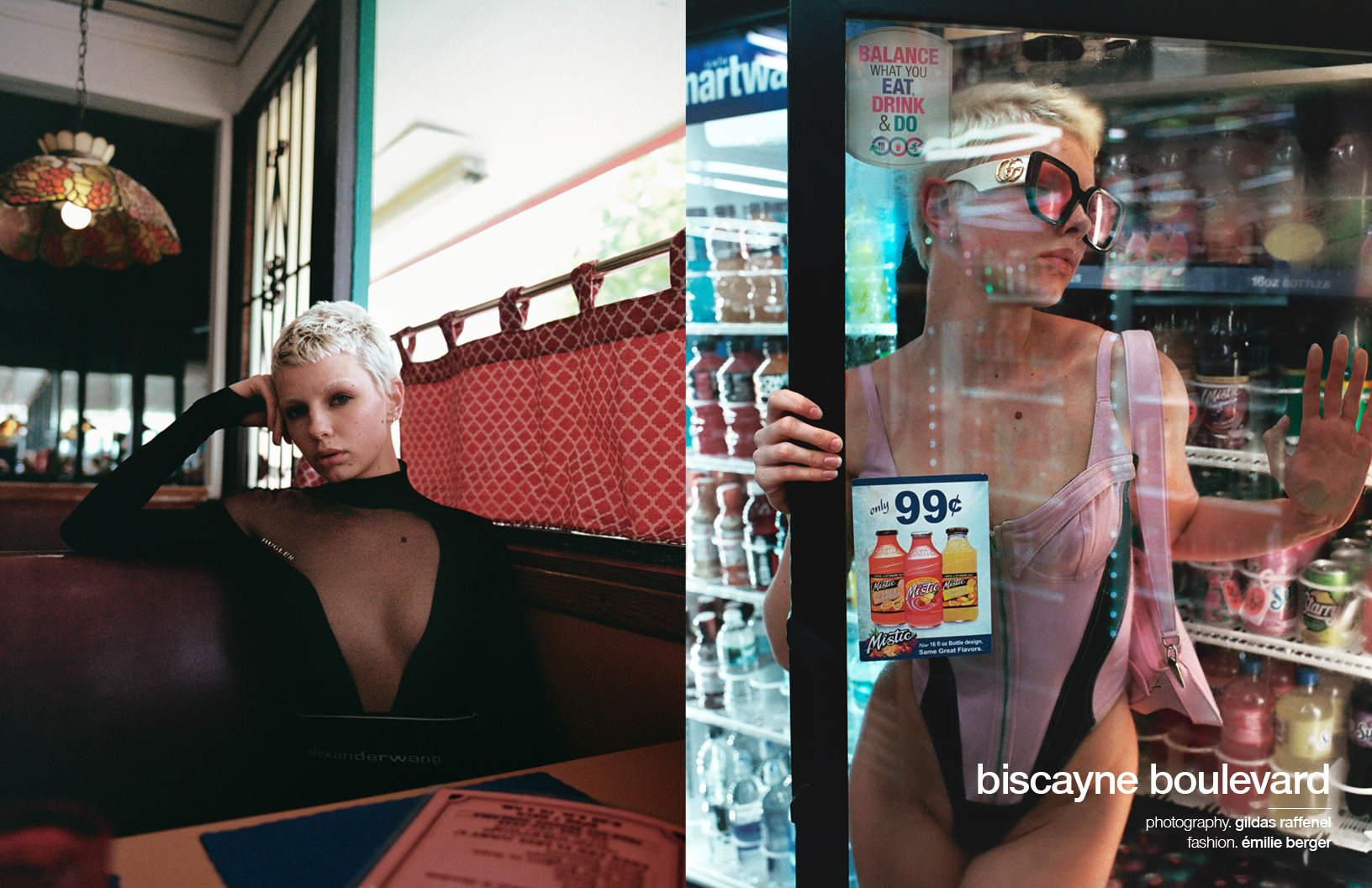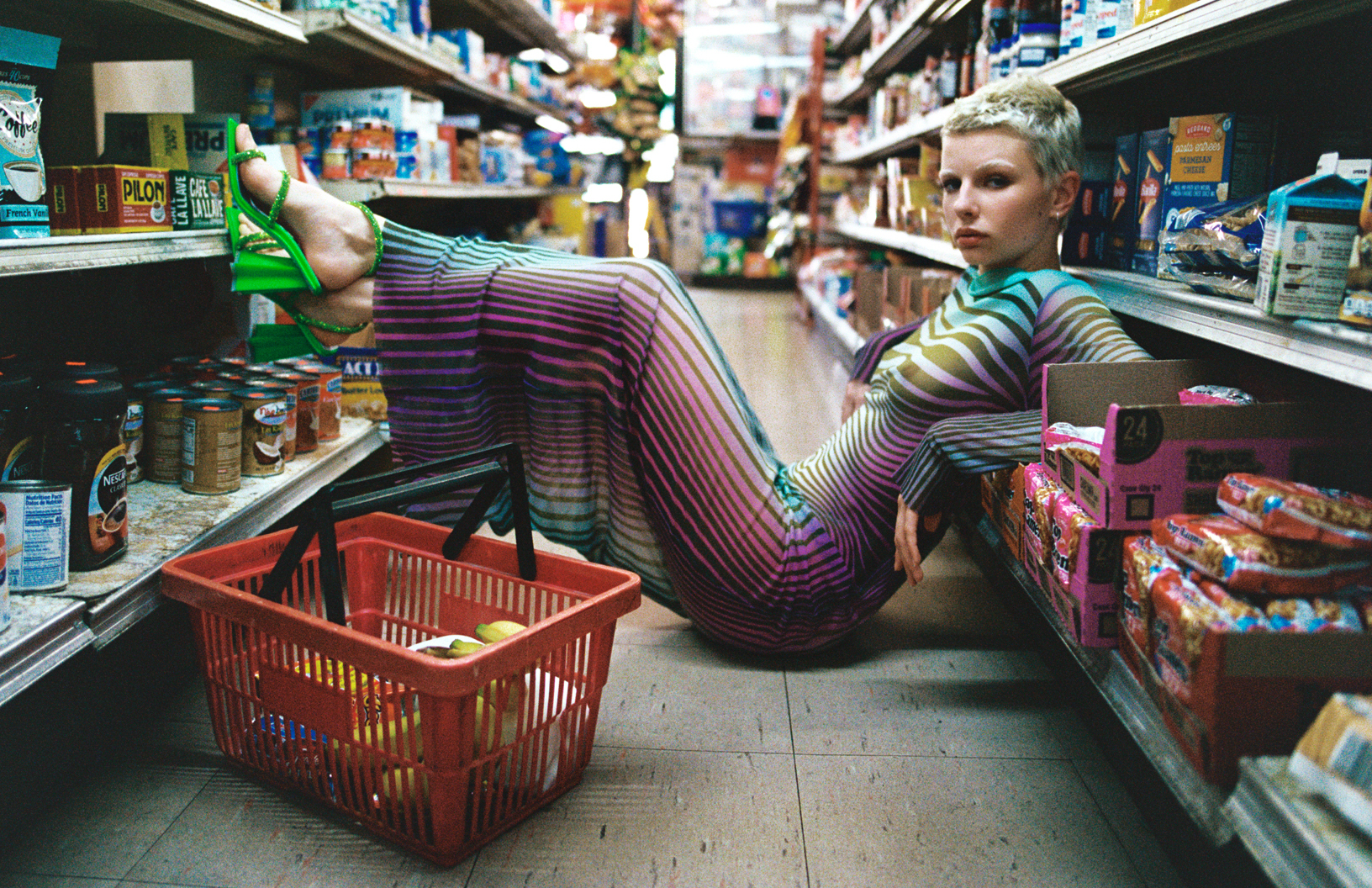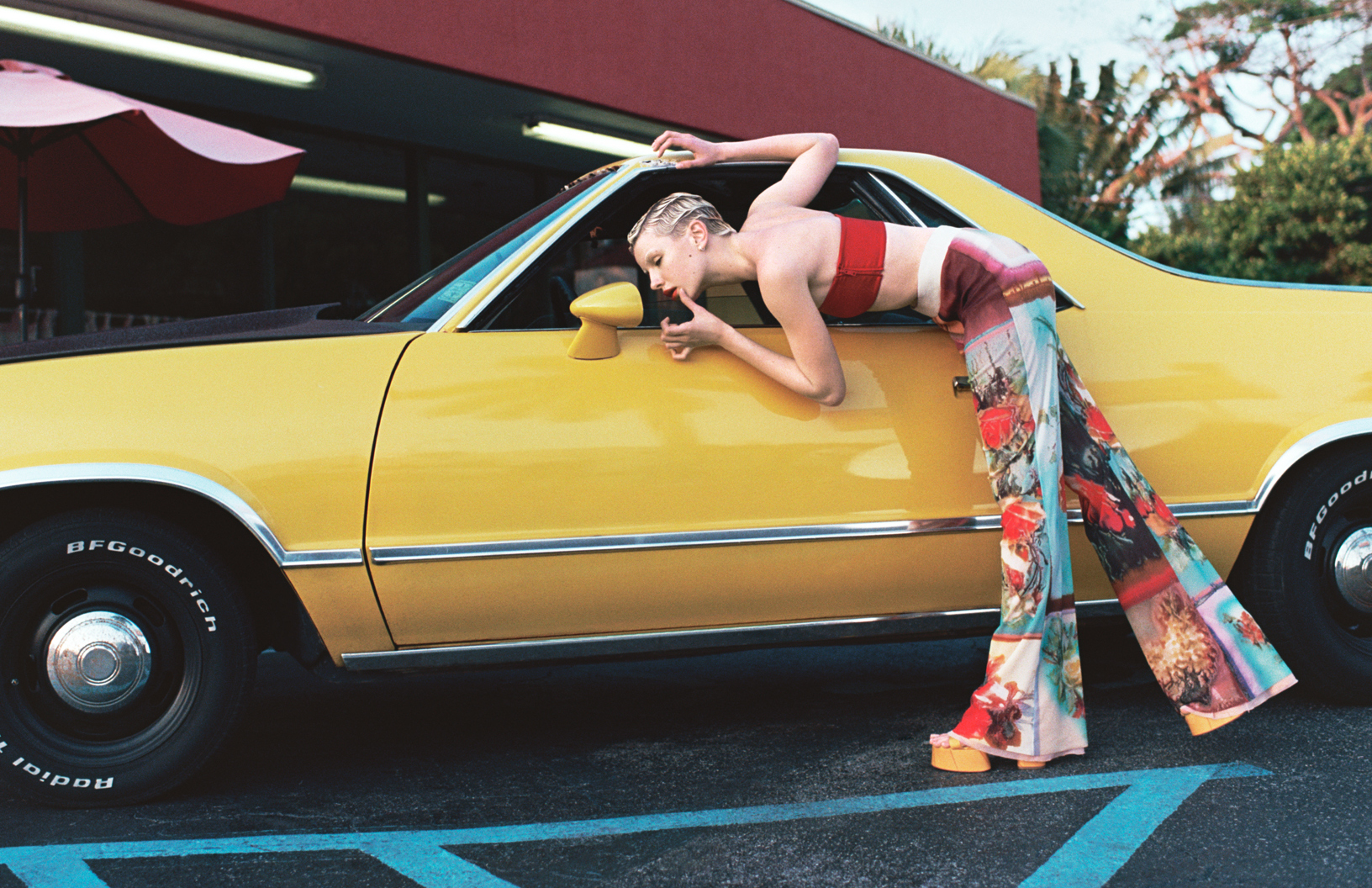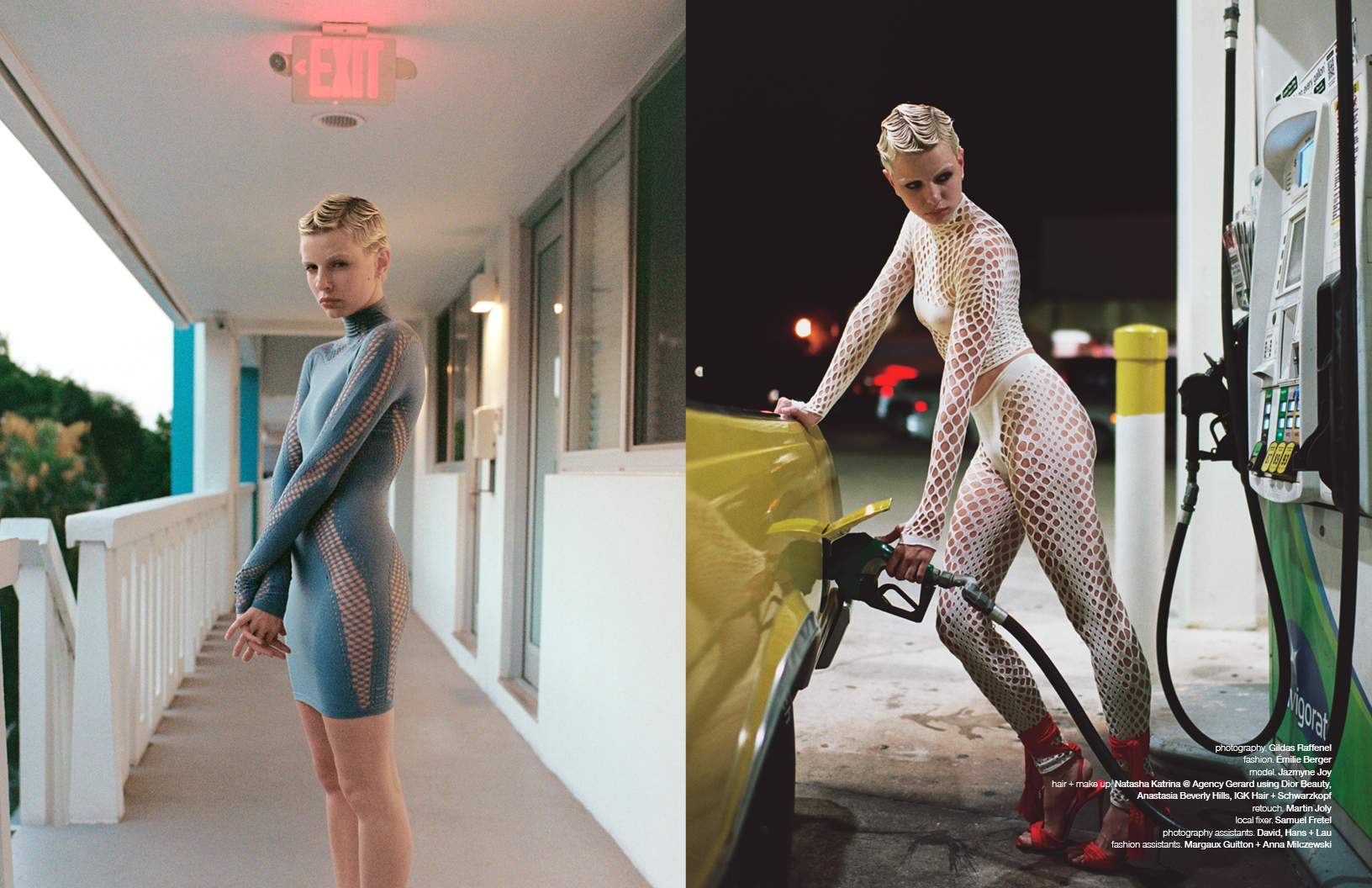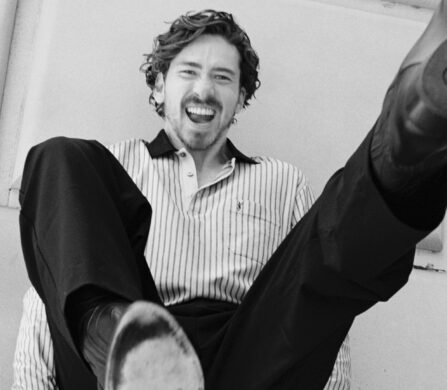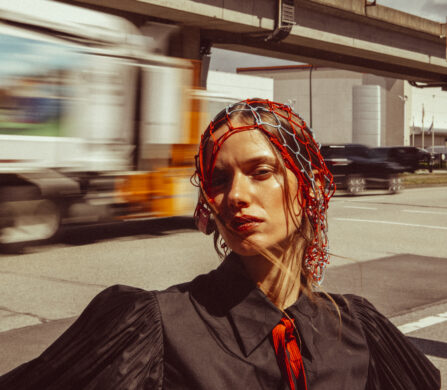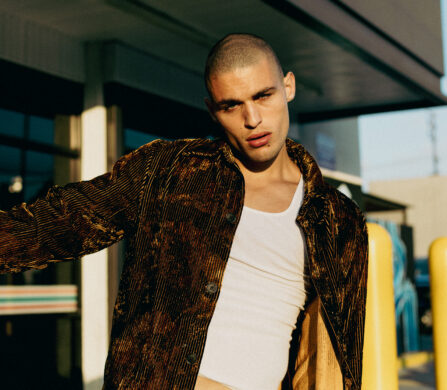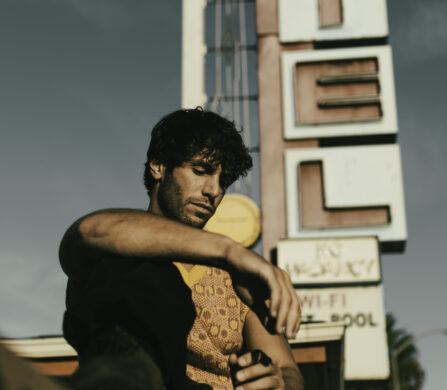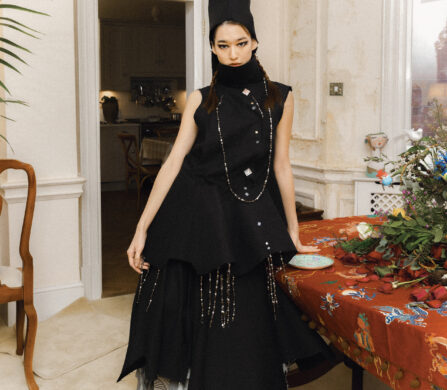The American way of life is captured in this editorial photographed by Gildas Raffenel who imagined this story as a tribute to Martin Parr’s vision. A daily routine on the famous Miami Boulevard, photographed on a few blocks on Biscayne Boulevard, Raffenel worked alongside Émilie Berger who styles model Jazmyne Joy in looks by Alexander Wang, Gucci, Mugler and others, with hair and make up by Natasha Katrina. Schön! speaks with Raffenel about his beginnings in photography, where he pulls inspiration from, and more.
How did you first get into photography?
Becoming a photographer has always been a natural path for me, ever since my father placed a Canon AE-1 in my hands during my teenage years. I never envisioned myself doing anything else; academics didn’t quite captivate me. It was through a photography internship at the age of 14 that I discovered this profession. Subsequently, what drew me closest to the world of imagery was pursuing studies in film and audiovisuals in high school and later at ICART, a photography school in Paris.
Your career first brought you into photojournalism, what inspired you to pursue that?
During the first year of this school in 2005, I had the chance to intern at a small Parisian agency: Wostock Press. Interns were treated like permanent members of the agency, with minimal pay but ample freedom. I quickly decided to leave school and venture into freelancing. My work involved covering Parisian current affairs and social movements. I funded my foreign reportages to capture confrontations at events like the G8 in Gleneagles and Rostock. At that time, I was genuinely drawn to global events and visual storytelling.
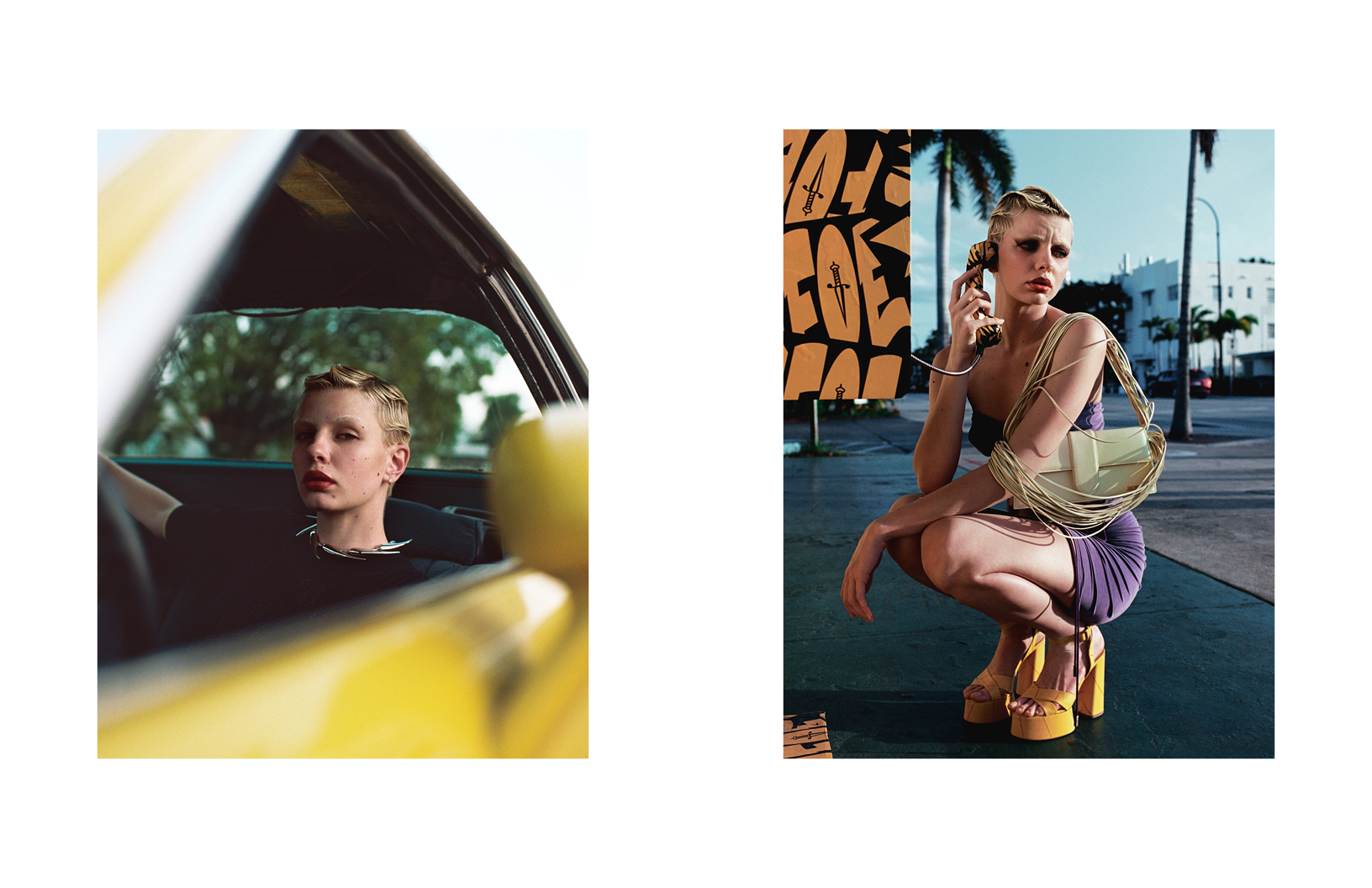
top. Maison Kitsuné
necklace. Mugler
opposite
top, skirt + bag. Jacquemus
shoes. Christian Louboutin
What made you decide to shift from photojournalism to more commercial work?
Despite my passion and determination, I was confronted with the reality of a profession in a rapid state of change. The digital revolution was transforming the landscape of photojournalism. I had dreamt of being a visual reporter like the great names of the past, but I had to come to terms with the fact that agencies were no longer sending their own photographers. They now relied on local correspondents already on the ground. Everything was moving faster, and budgets were shrinking. I had bills to pay, and the press alone couldn’t sustain me. So, I seized every opportunity available to me to continue making a living through photography because the only certainty I had left was that I didn’t know or want to do anything else. I began working for local communications agencies and then small fashion magazines. I had no formal qualifications in the field, but I had the desire to create beautiful images and share quality moments with small teams of passionate talents.
It’s been over a decade since you launched your studio and work in fashion photography, how would you describe the way you’ve grown as a fashion photographer in that time?
In 2007, I acquired a small battery-powered Profoto flash, enabling me to explore new techniques with a vibrant, pop-style aesthetic—playful setups just for the fun of it. It was all about experimentation. Then, in 2011, I co-founded Place Cliché studio, joining forces with a photo retoucher to push the boundaries of photo finalization. That’s when my interest in fashion truly sparked, and I began to refine my style. Over time, I mellowed out, putting aside elaborate setups and photomontages, moving towards simplicity, naturalism, and capturing genuine emotions. I found myself torn between growing my business and nurturing my photography career. I ended up doing a lot of advertising and commissioned work, leaving me with less time for my personal projects.
You manage a team of 10 — what is a typical day-to-day like at your studio
Nowadays, Place Cliché studio comprises a team of 10 individuals whom I manage on a daily basis. It’s an amazing crew of young talents—photographers, retouchers, and stylists. We’ve evolved into a specialized e-commerce content production hub for renowned houses like Lanvin, Mugler, Jean-Paul Gaultier, and more. We handle entire projects, from assembling teams and managing bookings to creating lighting setups. Our workflow involves both on-set photography with our teams and in-house post-production. It’s a well-oiled machine, and I have complete trust in my team. This setup finally allows me to start thinking about myself and my own aspirations once again!
Can you describe your creative process from conceptualisation to execution for a typical photography project?
My creative process for a photography project begins with thorough reflection and planning. I strive to identify the core element of the project, the message, or the emotion we want to convey through the images. This can be inspired by the project’s theme, the brand, or the product we are showcasing. I gather visual references, whether it’s images, artworks, or even films, that align with the aesthetic we aim to achieve. I enjoy curating mood boards.
Once the concept is solid, I move on to detailed planning. This involves selecting shooting locations, creating a list of necessary equipment, and establishing a production schedule. We hold team meetings to discuss everyone’s roles and responsibilities, ensuring everyone is aligned with the project’s vision.
During the shoot, I work closely with my team to bring the vision to life. This includes directing models, overseeing lighting, and adjusting compositions to achieve the best results. I like to leave room for spontaneous creativity, as sometimes the best images emerge when we are open to the unexpected.
After the photos are taken, I move on to post-production. This involves sorting through the images, retouching, adjusting colors, and final processing to achieve the desired aesthetic. I supervise the retouchers working on my images, guiding them to the desired result while allowing them the freedom to explore their own inspirations.
What are some photography editorial concepts that you’re keen to explore in the future?
I aspire to continue exploring personal concepts and forge my path through editorials for both print and online magazines. My desire is to delve into editorial concepts that showcase the intersection of fashion and sustainability, highlighting ethical and environmentally conscious creations. I believe in using the powerful medium of fashion photography to shed light on sustainable practices and contribute to a more responsible and eco-friendly industry. This blend of style and ethics is where I see the future of fashion photography heading, and I’m eager to be a part of driving this positive change.
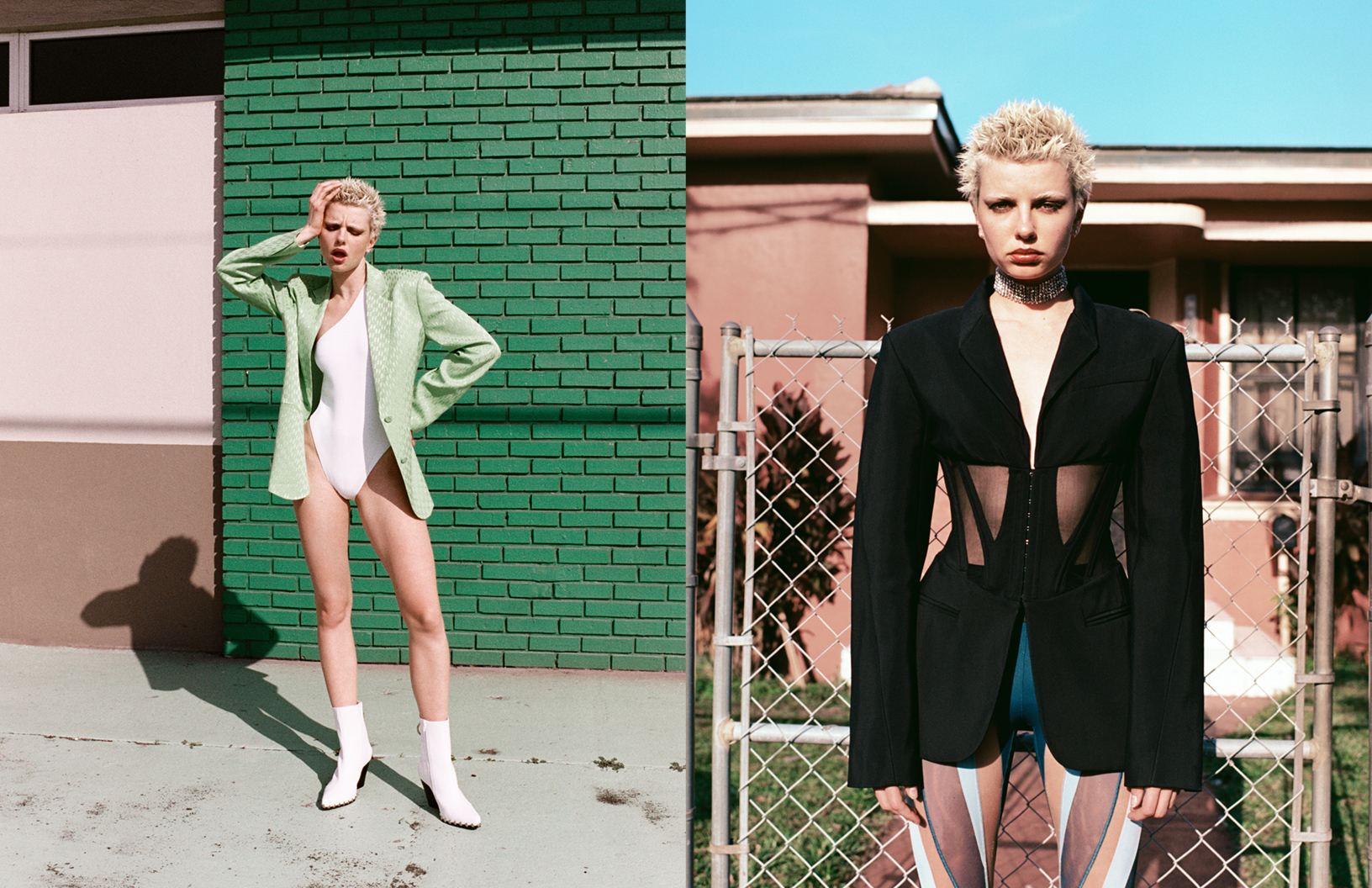
jacket. Karl Lagerfeld
swimsuit. Calvin Klein
shoes. Chiara Ferragni
opposite
jacket + leggings. Mugler
necklace. Karl Lagerfeld
What are some books, films, or albums that inspire you?
In terms of inspiration, I have long been captivated by editorials featured in V magazine and Numéro. I consume a multitude of films that, in one way or another, influence the aesthetics of my photos. Works such as the timeless “Blow-Up” by Antonioni, “The Neon Demon,” or “Drive” by Refn have left a significant imprint on my creative vision. The way these films play with visual elements and storytelling deeply resonates with my approach to photography, infusing my work with a distinct cinematic quality and a sense of intrigue.
What do you think makes a photograph stand out and resonate with viewers?
A photograph that resonates with viewers is one that evokes genuine emotions, narrates a compelling story, and boasts a distinct, impactful visual aesthetic. Authenticity and originality are key elements that enable a photograph to stand out and connect with the audience. It’s about capturing that raw, unfiltered emotion and presenting it in a way that is both unique and relatable, inviting the audience to delve into the narrative and experience a moment captured in time.
What is next for you?
My next professional goal is to continue broadening my creative horizons, collaborating with innovative talents, and consistently elevating the standard of my work. I also aim to explore new and inspiring international opportunities in the realm of fashion photography. Whether it’s working with diverse cultures, experimenting with cutting-edge techniques, or venturing into uncharted artistic territories, I’m excited to embrace the challenges and growth that lie ahead.
This Schön! editorial has been produced by
photography. Gildas Raffenel
fashion. Émilie Berger
model. Jazmyne Joy
hair + make up. Natasha Katrina @ Agency Gerard using Dior Beauty, Anastasia Beverly Hills, IGK Hair + Schwarzkopf
retouch. Martin Joly
local fixer. Samuel Fretel
photography assistants. David, Hans + Lau
fashion assistants. Margaux Guitton + Anna Milczewski














